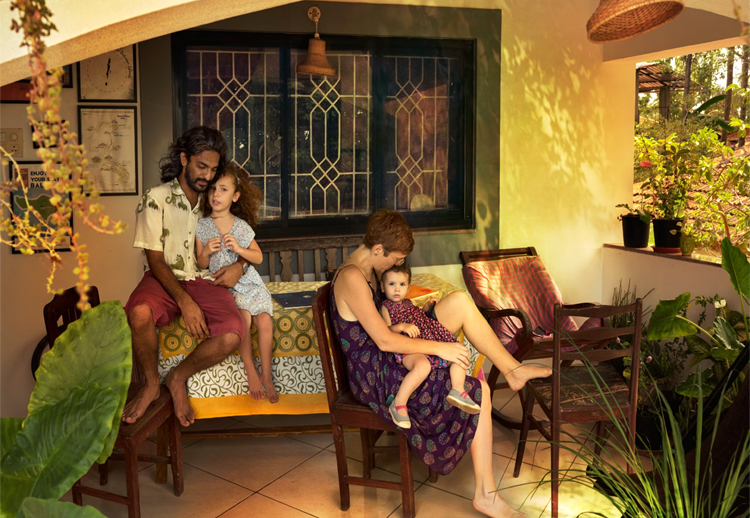Discover tips for creating cosy homes with warm decor, soft textures, and inviting colors to make your space feel welcoming and snug.
Designing a cozy home takes thoughtfulness and touches of the self. And the ambiance is further enhanced by soft lighting, warm colors and comfortable furniture. Plush rugs, cushions, blankets and other textures create warmth. They also create natural feel (eg, wood, plants), something that the office does not entail.
It’s unique in that personal items, like family photos and cherished mementos, are on display. Candles or home cooked meals have a way of making us feel comfortable. It also helps that the space itself is kept tidy and clutter free. The very fundamentals of a cosy home go beyond aesthetics; it’s about design elements that give you this feeling of being at ease. It’s your personal world away from the rest of the world.
Introduction To Cosy Homes
A cosy home feels warm and welcoming. It wraps you in comfort. You feel safe and relaxed. The essence of a cosy homes lies in its details. Small touches make a big difference.
Concept Of Cosiness
Cosiness means warmth and comfort. It appeals to our senses. Think of soft blankets, warm lights, and inviting spaces. The concept includes:
- Soft textiles like cushions and throws.
- Warm lighting from lamps and candles.
- Inviting scents like vanilla or cinnamon.
Cosiness is about creating a nurturing environment. It’s a space where you can unwind.
Importance Of A Cosy Home
A cosy home is essential for well-being. It reduces stress and boosts happiness. Here are some reasons why:
- Comfort: A cosy home feels comfortable and secure.
- Relaxation: It provides a space to relax after a long day.
- Family Bonding: It encourages family time and togetherness.
Creating a cosy home enhances your quality of life. It’s a place to recharge and find joy.
Credit: lifeathome.ikea.com
Elements Of Warmth
A cosy home feels warm and inviting. The right elements can make any space feel snug. Lighting choices and color schemes are key to creating this warmth.
Lighting Choices
Lighting sets the mood in a room. Soft lighting makes a space feel calm. Use lamps and fairy lights for a gentle glow. Candles add a natural, flickering light.
- Table lamps
- Floor lamps
- Fairy lights
- Candles
Place lights at different heights. This adds depth and warmth to the room.
Color Schemes
Colors affect how a room feels. Warm colors make a space feel cosy. Use earthy tones like brown, beige, and terracotta. Soft pastels like light pink and pale blue also create warmth.
| Warm Colors | Soft Pastels |
|---|---|
| Brown | Light Pink |
| Beige | Pale Blue |
| Terracotta | Mint Green |
Combine colors with textured fabrics like wool and cotton. This adds to the cosy homes feel.
Comfort In Furniture
The furniture is the first thing for a cosy homes. The difference is, it’s all the right pieces. It comes down to whether it’s a plush sofa or a snug armchair, comfort is what you need. What makes furniture so comfortable really?
Choosing Soft Fabrics
Soft fabrics transform any furniture into a cosy haven. Think velvet, cotton, or chenille. These materials feel soft to the touch. They invite you to sit and relax.
Consider these factors when choosing fabrics:
- Texture: Smooth or slightly textured fabrics feel luxurious.
- Durability: Choose fabrics that last. High-quality materials withstand wear and tear.
- Color: Soft colors create a calm environment. Neutrals and pastels work well.
Ergonomic Designs
Ergonomic designs ensure your furniture supports your body. This type of design offers comfort and health benefits. Look for chairs and sofas that support your posture.
Key features of ergonomic furniture:
- Adjustable Height: Find chairs with adjustable heights. This feature helps you sit comfortably.
- Lumbar Support: Good lumbar support prevents back pain. Choose chairs that support your lower back.
- Armrests: Armrests provide additional comfort. They help rest your arms while sitting.
Ergonomic furniture combines comfort with health benefits. This blend is crucial for a cosy homes.
Serenity In Design
Creating a cosy homes is an art. It involves crafting a space that feels peaceful. Serenity in design plays a crucial role in this process. The right design elements can turn any house into a tranquil haven.
Minimalist Approach
A minimalist approach is key to achieving serenity. It involves reducing clutter and simplifying your space. Focus on quality over quantity. Select furniture that is both functional and aesthetically pleasing.
Consider the following elements for a minimalist home:
- Neutral colors: Whites, beiges, and soft grays create a calm atmosphere.
- Simple furniture: Choose pieces with clean lines and basic shapes.
- Open spaces: Allow for plenty of open areas to prevent a crowded feel.
Natural Elements
Natural elements bring a sense of peace and calm. They connect the indoors with the outdoors, creating a harmonious environment.
Here are some ways to incorporate natural elements:
- Wood: Use wooden furniture or accents for warmth and texture.
- Plants: Add indoor plants to purify the air and add life.
- Natural light: Maximize natural light with large windows and light curtains.
Consider this table for a quick reference:
| Element | Description |
|---|---|
| Wood | Warmth and texture |
| Plants | Air purification and life |
| Natural light | Bright and airy feel |
Using these design principles, you can create a serene and cosy homes. Focus on simplicity and natural elements to achieve a peaceful space.
Personal Touches
A cosy home often reflects the personalities of its inhabitants. Personal touches can transform a house into a warm, inviting haven. These elements tell a story, evoke memories, and create a sense of belonging. Let’s explore some personal touches that make a home truly cosy.
Family Photos
Family photos are a simple yet powerful way to add warmth. They capture moments of joy, love, and togetherness. Displaying these photos can make any space feel more personal.
- Use a mix of frames for an eclectic look.
- Create a gallery wall in a hallway or living room.
- Update the photos regularly to reflect new memories.
Handmade Items
Handmade items add a unique charm to any home. They often carry sentimental value, making them irreplaceable.
| Item | Description |
|---|---|
| Knitted Blankets | Warm and cozy, perfect for snuggling on the couch. |
| Ceramic Pots | Handcrafted pots add character to your plant collection. |
| Paintings | Original artwork adds a personal touch to your walls. |
These personal touches, from family photos to handmade items, can turn any house into a cosy homes. They add warmth, character, and a sense of identity to your living space.
Credit: pocenglish.com
Seasonal Adaptations
A cosy home adapts to the changing seasons. Comfort and warmth in winter, coolness and airiness in summer. This ensures a comfortable living environment all year round.
Winter Warmth
During winter, a cosy home feels warm and snug. Adding layers, such as thick blankets and warm rugs, helps keep the cold at bay.
- Use wool throws on sofas and chairs.
- Add thick curtains to windows to block drafts.
- Place area rugs on hardwood floors to add warmth.
Lighting also plays a crucial role. Use soft, warm lights to create a welcoming atmosphere.
- Install dim lights in living areas.
- Use candlelight for a cosy touch.
- Opt for string lights to add a festive feel.
These small changes make a big difference in winter comfort.
Summer Coolness
In summer, a cosy home feels fresh and cool. Light fabrics and open windows create an airy environment.
- Replace heavy curtains with light, sheer fabrics.
- Use cotton or linen bedspreads.
- Place fans in strategic locations to enhance airflow.
Colors also influence the coolness factor. Use light colors to reflect heat and create a calm atmosphere.
| Item | Summer Adaptation |
|---|---|
| Bedding | Light cotton sheets |
| Rugs | Remove or use thin rugs |
| Windows | Open for ventilation |
Small changes in decor and fabric choices can make a significant impact in maintaining a cool and comfortable home during summer.
Creating A Peaceful Atmosphere
Warmth like a cosy home feels like a warm embrace. That’s essentially a place where you can relax and have yourself some time. However, in order to feel this, it’s imperative that you create a peaceful atmosphere. To take walks in a serene haven, let’s see how you can make your home a serene haven.
Soundproofing Tips
Noise can disrupt your peace. Soundproofing your home can help. Here are some effective tips:
- Seal gaps: Use weatherstripping to seal gaps in doors and windows.
- Thick curtains: Hang heavy curtains to block outside noise.
- Rugs and carpets: Place rugs or carpets on floors to absorb sound.
- Soft furnishings: Add cushions and throws to reduce echoes.
Fragrance Choices
Smell plays a big role in creating a cosy homes. Choose the right fragrances to enhance peace. Here are some ideas:
| Fragrance | Effect |
|---|---|
| Lavender | Calming and helps you sleep better. |
| Vanilla | Warm and comforting, ideal for relaxation. |
| Citrus | Energizing and uplifting, perfect for a fresh feel. |
| Cinnamon | Inviting and cosy, great for a homely vibe. |
Using these soundproofing and fragrance tips can help create a peaceful atmosphere in your home. Enjoy your serene and cosy space!
Credit: freepik.com
Maintaining A Cosy Home
A cosy home is a sanctuary of warmth and comfort. Keeping it cosy requires consistent effort and attention. By maintaining cleanliness and order, you ensure a welcoming atmosphere. Below are some strategies to help you maintain a cosy homes.
Regular Cleaning
Regular cleaning is essential for a cosy home. Dust and dirt can make spaces feel cluttered and uninviting. Make a cleaning schedule to stay on top of chores. A clean home smells fresh and feels inviting.
- Vacuum carpets and rugs weekly.
- Wipe down surfaces daily.
- Clean windows monthly for natural light.
Consistency in cleaning keeps your home cosy and comfortable. Clean homes are also healthier and more relaxing.
Decluttering Strategies
Clutter can make even the nicest home feel cramped. Decluttering opens up space and makes rooms feel larger. Here are some decluttering strategies:
- Start with one room at a time.
- Use boxes labeled “Keep,” “Donate,” and “Trash.”
- Sort through items and decide their fate.
A decluttered home is visually appealing and more comfortable. Less clutter means less stress and more relaxation.
Embrace these strategies to keep your home cosy and welcoming. Your effort will pay off with a warm, inviting space.
Frequently Asked Questions
What Makes A Home Feel Cosy?
A cosy home feels inviting and warm. Soft lighting, comfortable furniture, and personal touches like photos create a snug atmosphere.
How Can I Make My Home Cosier?
Add soft textiles like rugs and cushions. Use warm colors and incorporate personal items that make you happy.
What Colors Create A Cosy Atmosphere?
Warm colors such as earth tones, soft yellows, and warm reds make a space feel welcoming and cosy.
Are Plants Good For A Cosy Home?
Yes, plants add life and vibrancy to a home. They can make any space feel more inviting and comfortable.
Conclusion
A cosy home is a sanctuary that reflects warmth and comfort. It’s where you feel at ease. Incorporate soft textures, inviting colors, and personal touches. These elements create a welcoming atmosphere. Remember, a cosy home is all about making it your own personal haven.
Enjoy your space!






